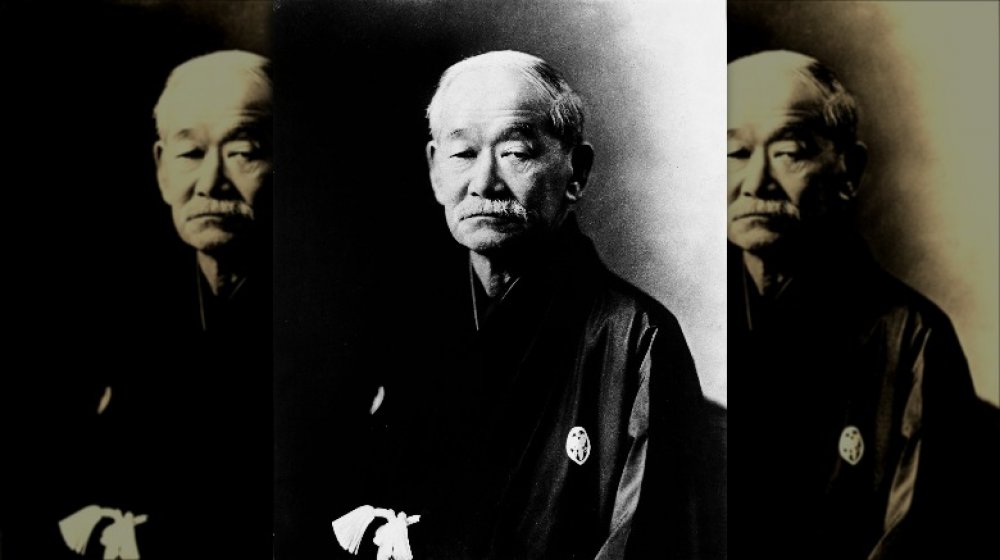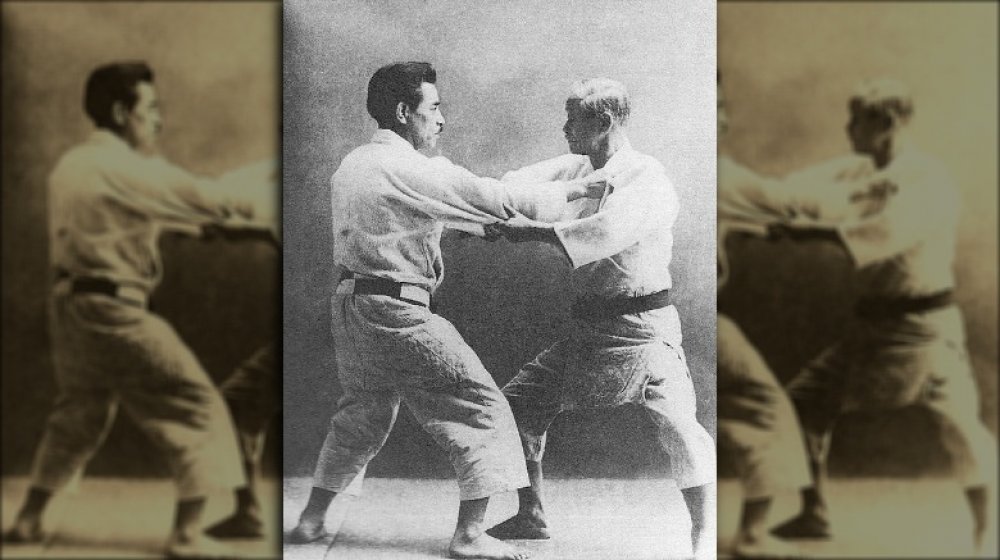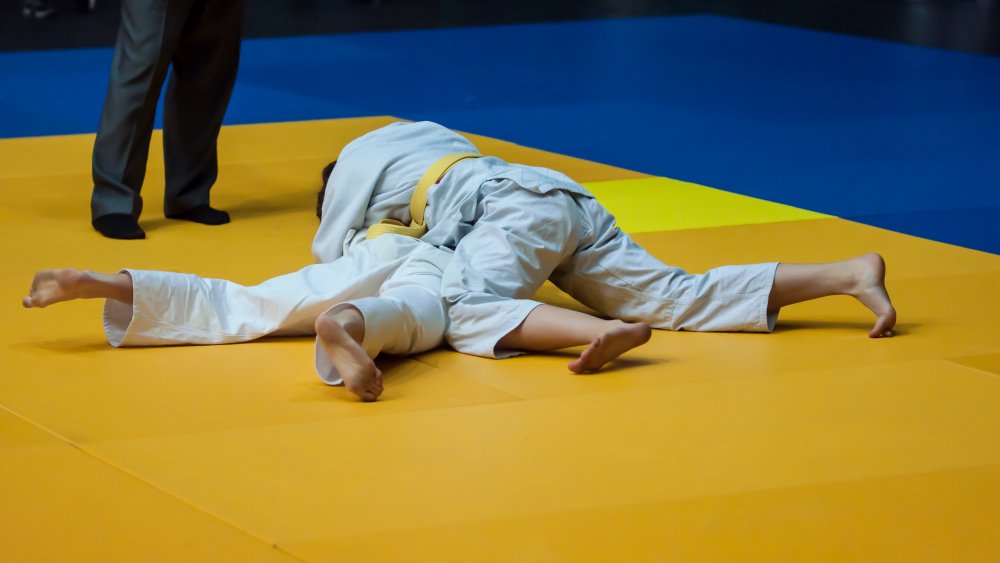The Truth About Jujitsu Legend Jigoro Kano
Jigoro Kano was a little guy with a stubborn jaw, a no-nonsense mustache, and the kind of gaze that could profoundly unsettle a block of granite. Even in grainy black and white pictures of Kano, it's obvious that this individual could take a man twice his size and launch him across the room like a cut-price sack of yesterday's potatoes. But the thing that clings in those old photos is that stillness in his eyes. It's Hemingway-esque.
Kano was a serious man. He also cast a long shadow. From his birth in 1860 to his death in 1938, Kano would master a martial art, modernize it, and then unleash it on a global audience.
Judo Channel's description of Kano's early years sounds like the opening premise for at least a dozen beloved martial arts movies. It's too good not to relate word-for-word: "Although Jigoro was strong scholastically, he was physically weak and was ridiculed by both the older boys and his own classmates, and this humiliation made him yearn for physical strength."
You can't beat a good yearn.
Kano kept learning
Standing at a smidge over five feet and naturally slender, Kano was rejected from a handful of Jujutsu schools as a youth. But yearning for physical strength paid off, and at 18 he finally gained his place on a dojo mat. Instantly two things set him apart: his natural athletic talent, and an insatiable zeal to learn. He was relentless. He didn't just throw his body into the art. He launched his quick and cunning mind into the fray as well. Just one year after joining the dojo, Kano was selected to give a demonstration alongside his instructors to U.S. President General Ulysses Grant, who was in Japan on an official visit. Not long after, Kano was a master instructor of his first dojo.
All this is good stuff — and a fun example of an underdog beating the odds. But the next bit is what elevated this pocket rocket of asskickery to legendary status.
Kano kept learning. He joined a new dojo, quickly earning a second title of master instructor. Then he began to assimilate techniques of yet more schools. Just 21 years old, Kano could see the colorful expanse of a kaleidoscope of traditional fighting methods. He realized each of these schools had their unique strengths. By now, other martial artists had become intrigued by Kano's new techniques for destabilizing and throwing opponents. And with a bit of luck, a bit of sensible-mustached planning, and a lot of self-belief, a new martial art was born.
In 1882, Judo sauntered confidently into the international sporting arena.
A breath of fresh air to a traditional art form
Kano wasn't content with teaching a traditional system. Realizing a need to build structured incentives and a better method of organizing his new art, Kano devised black and white belts and then introduced a dan ranking system to better demonstrate levels of proficiency within a martial art style. But his innovation spread beyond these well-recognized symbols we take for granted now. Right from the beginning, Kano documented the moves and methods of Judo in English. As the International Judo Federation reports, this may have been partly motivated by a desire for secrecy. But regardless of his intentions, from its earliest days, Judo was built to translate across cultures. This made Kano unusual, for sure, but it also made Judo unusual. It became an art form that spanned the traditional and the new, and it came ready-packaged for an international audience.
At age 49, Kano was invited to head up Japan's involvement in a new-fangled international sporting event — The Olympics. He'd remain a member of the International Olympic Committee until the age of 77, paving Japan's way into international sports in the Amsterdam (1928), Los Angeles (1932), and Berlin (1936) Olympics.
Kano died in 1938. Just over a couple of decades later, Judo would be ushered into the Olympics Program where it remains to this day. He also built a martial art anyone could excel at with the right combo of discipline, poise, and sensible-mustache energy. A pretty cool legacy.


